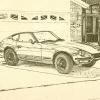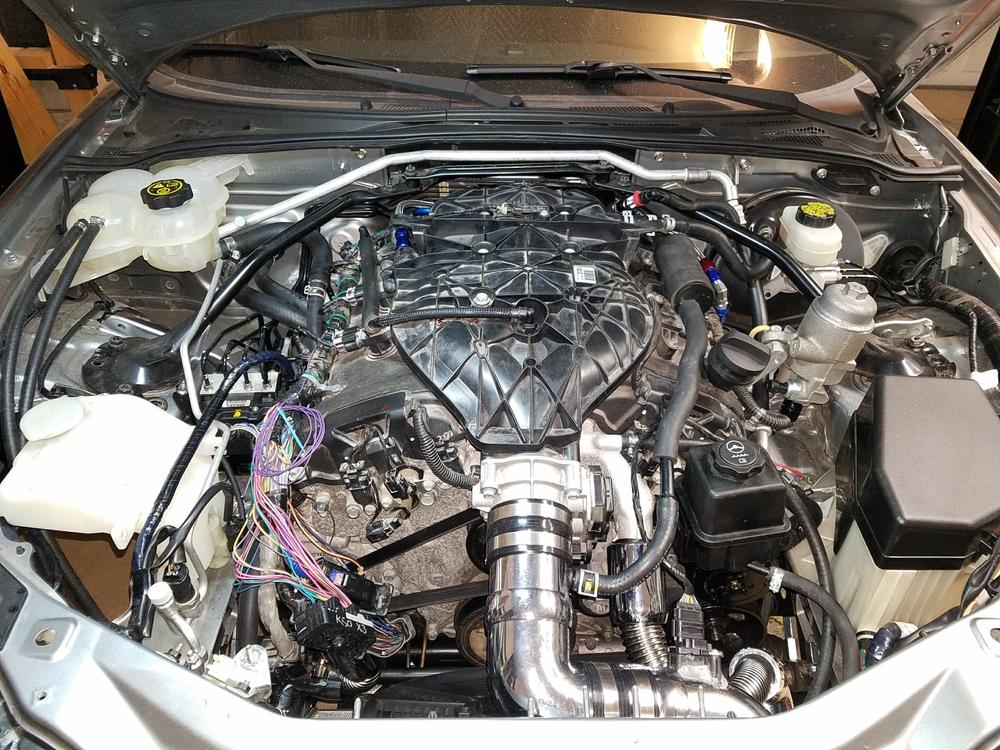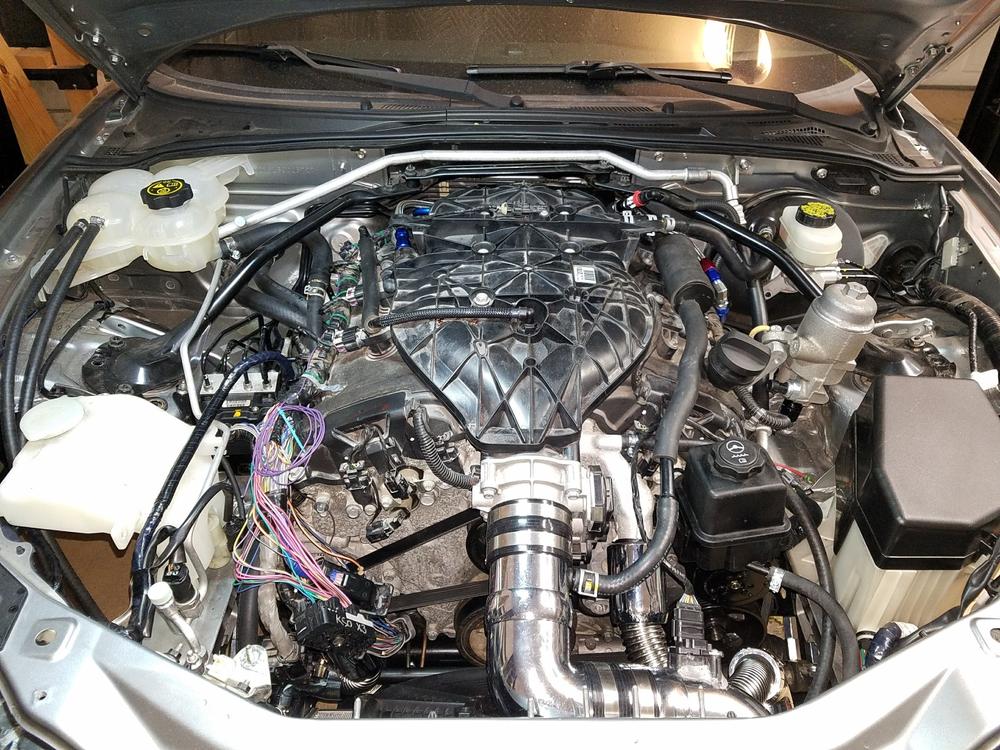Everything posted by djwarner
-
Places to Drive in Central Florida
Try the area around Spring Lake SE of Brooksville. Than and the area immediately west of there.
-
240z automatic / shifting issues
A bad or disconnected vacuum modulator will disrupt proper shifting. Remember a vacuum line has two ends as well as the hollow tube. I would first verify the vacuum hose, then replace the modulator before tearing into the AT again. There is no internal electronics in the AT. The only wiring is a switch for the starter enable and for the backup lights.
-
Who was interested in the FJ40?
This is one of the best restorations I've seen. https://classics.autotrader.com/classic-cars/1964/toyota/land_cruiser/101228839
-
Possible Vapor Lock Solution
Found this video on a cheap vapor lock solution. While I never had a problem, I know several others here have. Thought I'd give you the heads up.
-
3.5 L tt ecoboost swap
I’m waiting to get into the custom exhaust shop and then get the ac lines connected. Found a guy who makes custom gateways that allows the GM CANBUS talk to the Miata CANBUS to drive the OEM instrument panel. With the hood closed, it will look completely stock. Also added a 2 DIN android tablet so I can run Torque Pro. Formulas found by a Google search say it should 0-60 in around 4.0 seconds.
-
3.5 L tt ecoboost swap
I acquired a Camaro 3.6L LFX engine and 6L50 AT salvaged from my wife's car after she was rear-ended. The direct injection engine is somewhat unique in that it has exhaust manifolds incorporated into the heads and simple downpipes coming out of each side. The engine puts out 323HP on regular gas and the LFX/6L50 combo weighs less than the Z engine alone. A mild tune can lay 300HP at the rear wheels. When I acquired the drive train, I had planned on installing it in 240Z or 260Z but could not find a sound shell at the time. There is gobs of room in a Z. As proof, I ended up installing them in a 2011 Miata with virtually zero firewall modification or other body welding. These engines are readily available and now stand alone wire harnesses are available from V8 Roadsters.
-
0-140 Oil pressure sender
Don't think you will find any NOS senders for your project. After blaming a 0-90 sender for my low oil pressure for a long time, I finally hooked a mechanical gauge. After that, I had to admit an overhaul was in my future. Check out: His sender will register 10 Bar but never could pin down standards for the gauge itself. I still suspect the 6 Bar sender works with our gauges and the y only changed the face plate to say 90. If you are looking for an authentic sender for a restoration, I don't think you will find any. And there was a service bulletin to convert the 0-140 senders/gauges to a 0-90 senders/gauges once existing stocks were exhausted.
-
[SOLD] Series I Heater System For Sale
Heater and fan is sold.
-
[SOLD] Series I Heater System For Sale
Actually I did the installation more than three years ago. Should be able to search posts made on this site. Sent from my iPad using Classic Zcar Club mobile
-
[SOLD] Series I Heater System For Sale
For Sale 1970 240Z heater/fan unit. Unit is fully serviceable. Pulled when replaced with VintageAge unit. $200 plus shipping. PM me for more information.
-
Gas evaporating from Carburator
I had exactly the same problem with down draft Weber carbs and solved the problem by mounting an electric pump between the tank and hard line. Rather than powering the pump anytime the engine was running, I mounted a push button switch under the steering column cover. Pushing the button for 10-15 seconds until the bowls refilled and closed the float valves was all that was needed. You could hear the change in the pump pulsing once the valves closed.
-
Removing the carburetor water cooling lines
The purpose of the water circulation lines in the intake manifold is for heating - not cooling. When the carbs are at idle, there is a large pressure drop for the air entering the intake manifold. The large pressure drop means a large temperature drop. As the manifold is cooled, fuel droplets tend to wet out against them. This pools fuel in the manifold rather than making it into the cylinders. This is akin to your glass of iced tea wetting the outside of the glass while sitting on your patio table.
-
Without a 240Z after 5 years
Damn, If Jay had only released this video a week earlier..........
-
Without a 240Z after 5 years
I would second the motion. Swapping to a MT even if just to facilitate a sale would be worth the effort. At Mecum's I expected there would be enough Millenials and/or wives to stimulate a sale. There was one woman bidder on site but she dropped out at $7k.
-
Without a 240Z after 5 years
That video was the whole day, Z came up at 9:57 on the video clock - skip ahead to 9:57
-
Without a 240Z after 5 years
You found it. Sent from my iPad using Classic Zcar Club mobile
-
Without a 240Z after 5 years
Friends, For the first time in 5 years I am without my 240Z. It sold last Friday at Mecum's auction in Kissimmee. Watching the bidders viewing the cars earlier in the day, I realized the curse of the automatic transmission remained. As such, the Z brought less than I had hoped for, but more than I feared it would bring. So I guess it was a satisfactory result. Just wanted to take this time to thank all of you who have helped me over these last 5 years. And to anyone my postings may have helped, it was my pleasure. In all this group has been one of the kindest, and considerate group I have had the pleasure to being associated. The hole in my garage means I have some extra parts and I would like to offer them for sale to any of you who might use them. I have a Series I heater box with serviceable heater core. I also have the Series I heater fan with a good resistor block. (I may also have the fan switch, I will have to dig into my stocks to verify). I have a set of 2 each 4 screw SU carbs I bought from Madkaw. The pistons are free but otherwise, their condition is unknown. If you are interested in any of these, please PM me. As for my current project, I am putting a 330hp Camaro 3.6L V6 into my 2011 MiataChimera along with a 6 speed AT. Other have transplanted this engine, but I believe Mine will be the first AT. I've got the mechanicals in place and will start the merging of the LANs next.
-
New Road and Track article on 240Zs
http://www.roadandtrack.com/car-culture/a10348895/what-you-need-to-know-before-buying-a-1970-1973-datsun-240z/
-
First drive in the z in 25 years.....impressions.
There are two common aspects to fume intrusion, both are related to age and maintenance. First is the length of the exhaust pipe. It should extend beyond the rear valance by several inches so the exhaust gases mix with air that has separated from the body. Second is deterioration of the grommets surrounding the vent hoses entering the passenger compartment behind the vinyl finishing pieces at the rear bulkhead. Some have cited air turbulence caused when the rear tires rotate upward into the rear of the wheel wells. They suggest adding mud flaps there to break up the turbulent rearward of the wheel well. This of course also existed when the cars were new and didn’t cause fume intrusion. While you are at it, check the rear hatch gaskets. Both the one around the perimeter and the air exhaust vents in a series I car. These exhaust vents have rain drains with gaskets that can be compromised over time. Properly maintained, your Z should not suffer from fumes. Don’t settle for less than fume free.
-
Good youtube video in ABS plastic repair
I have following the series on YouTube for some time. They concentrate on muscle cars, but this episode will be helpful to many of our Z owners.
-
4 bolt su carbs
Sorry the spread sheet I have for the various distributors did not have the complete specs but it still has useful information for you. The d6k8-22 was used on the 1980 ZX for both the AT and MT. Static timing (0 RPM) is 10 degrees. Centrifugal advance is a max of 17 degrees at 2500 RPM. So as you are setting timing, set the 2500 RPM to 27 degrees BTDC and let the idle timing fall where it may. I've checked many of the early dissy's and they all max out around 27-28 degrees without vacuum connected. It also mentioned that the Vacuum advance may range up to an additional 30 degrees and may thus be harmful. This is a function of how your vacuum port for the dissy is set up. On Weber carbs, the port only sees vacuum when decelerating like when you suddenly close the throttle. With an AT, if you are not getting stumbling when you quickly close the throttle, I wouldn't worry about leaving it disconnected. Again, without fuel injection, there is no idle speed compensation. Standard method is to set the idle speed with a warm engine in gear and let the idle speed in neutral fall where it may.
-
4 bolt su carbs
Idle speed should always be measured with the car in drive with a warm engine. Idle speed in Park will always be higher. This is normal for carb'ed engines that don't have engine speed controlled by an ECU. 17 degrees advance at what RPM? These distributors are into centrifugal advance at idle speeds and timing will shift at different RPMs. Sorry, I don't have my manuals with me at present, if you can get the model number off the distributor, I can give you the centrifugal and vacuum advance particulars. The point timing specs listed in the FSM are measured at zero rpm (hence no centrifugal or vacuum advances) with a test light. BTW SU carbs don't really have a choke per se, the choke lever enriches the mixture. Once the engine warms for awhile closing the choke leans the mixture. I have a ZX dissy with an OEM ignition module and they have the equivalent of dual points as well. Though yours with an MSD ignition may have bypassed them.
-
4 bolt su carbs
Nope, this is not a transmission related issue. ATs have a dual point system that retards the spark in cold temperature. However the sensor is in the passenger compartment and only affects the timing at temperatures below 40 degrees. I don't think you northerners are seeing temperatures that cold this early in the season. For AT's the idle is set while warm and in gear. Rpms raise when moving from drive to neutral or park as the engine unloads. A 250 rpm rise in that case would be normal. Start the cold car and after a minute of idling note the idle RPM in park with the choke off. Drive the car to let the engine achieve operating normal temperature. Park the car and note the idle RPM in park. If you are seeing an increase, the mixture is changing, the throttle setting is changing, or a leak has changed the vacuum advance. I would suspect a vacuum leak. If the leak occurs when the engine is cold and seals as the engine warms, I would expect the cold idle RPM to be low. This is contrary to Kully's description. I could see this happening if there was a vacuum leak at one carb that caused it to go lean when cold. If the leak develops as the engine warms, the mixture leans out. Since the idle is high when warm, it makes me wonder what conditions were when the last time the mixture and idle settings were done. BTW I have found that these engines never idled well at the "650 rpm" in Drive as specified. This worked well for 510's but not our Z's. I suggest the following: 1. Check the carb mount bolts for tightness as well as the balance tube fittings and intake manifold bolts. 2. Remove the vacuum advance line from the distributor and block it with a golf tee. 3. With a warm engine in neutral, set the idle speed to 900 RPM and set the timing to 10 degree BTDC. Idle speed will be affected as you adjust the timing, so you may have to repeat this step several times. 4. With a warm engine in neutral and correct timing, adjust the carb mixtures per the manual. 5. With the car chocked and the parking brake applied, set the idle speed to 700-750 rpm. 6. With the car back in neutral, re-install the vacuum advance line. If the idle RPM changes significantly, troubleshoot. Vacuum advance should only affect timing when letting your foot of the accelerator at high speed. I suspect that if your problem remains after this, the symptoms will change to a lower RPM at cold idle in drive. This may require more choke usage til warmed up.
-
irma
Out of curiosity were the arc marks on the half of the wire connected to the house or the pole? My understanding is that the steel cable provides the strength of the connection between the pole and the house and mechanically supports the copper wires. As a matter of safety, lightning strikes, etc., the cable is connected to the local earth ground at the house. If this is the case I would expect the arc marks to be on the half connected to the house. I went to check mine today but my service is underground.
-
irma
Appears you lucked out as well. Note on your electricity, your electric service is 220v made from two 110 volt circuits setup back to back. In your distribution panel each circuits feeds different 110V circuit breakers. Your 220V service has two breakers tied together each fed by one of the two 110V circuits. If one 110V power feed is down, you should have several circuit breakers without power, not just the 220V service. If all your 110V circuits breakers have power, then you have 220V service to your house and one of the two circuit breakers in your AC circuit has tripped. Try resetting the breaker. If some of your 110V circuits are out of power, it may be wise to flip off all your 220V breakers until power is restored to prevent stress on those loads.








